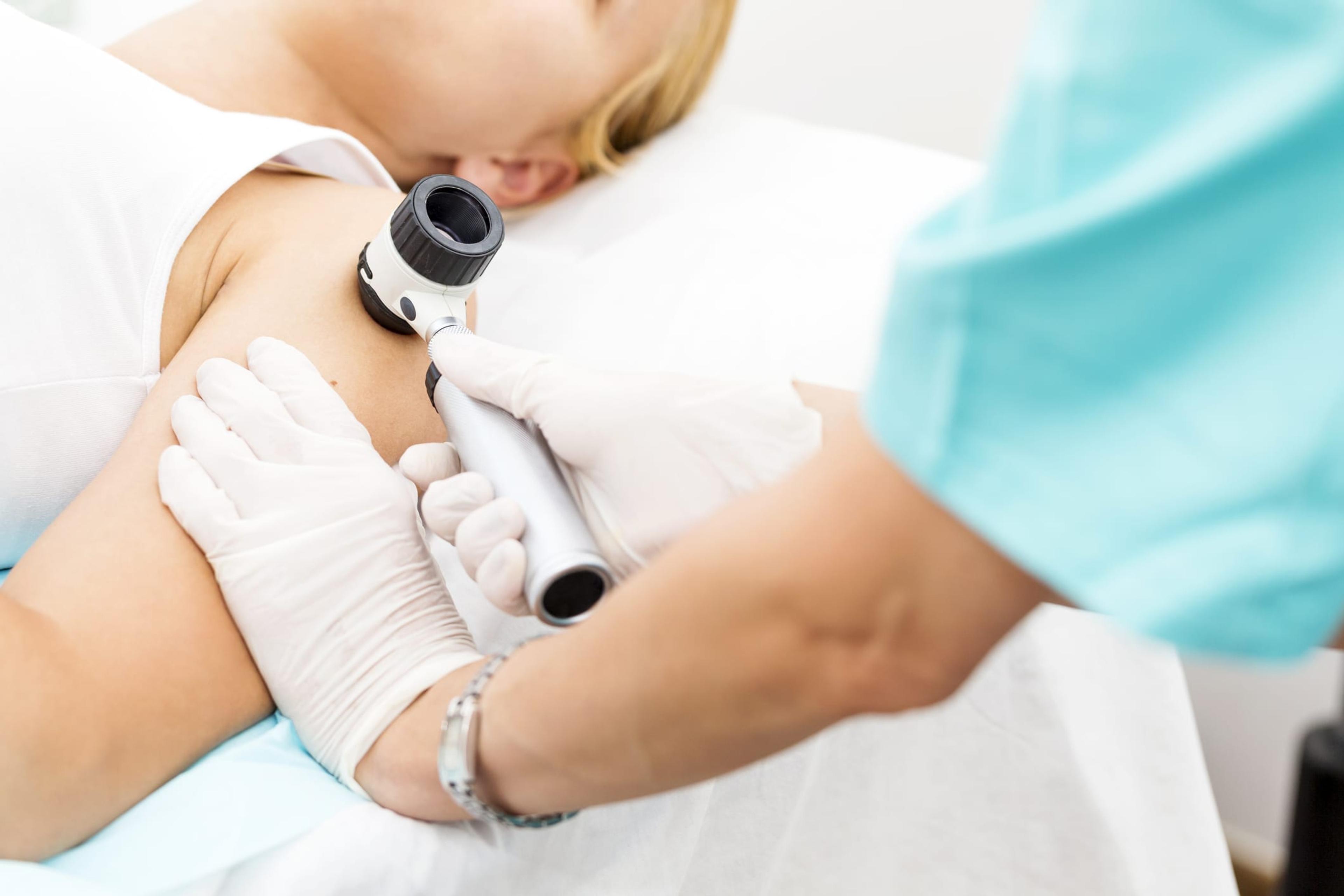
Did you know skin cancer is the most common cancer in the United States? The American Academy of Dermatology reports one in five people will develop the disease in their lifetime. This static is just one reason regular screenings are such a vital part of preventive care. When performed regularly, screenings help with early detection of cancer and other surface-level abnormalities. Individual guidelines can vary according to skin tone, personal history and exposure to UV radiation. Additional risk factors include:
- Age
- Blond or reddish hair
- Frequent sunburns
- Skin lesions
- Large amount of moles
- Weakened immune system
A skin screening is a visual examination performed by a medical professional. They check for suspicious moles, birthmarks, dark spots or unusual textures that may indicate a more serious problem. It’s important to note that skin screenings are not diagnostic tools. They can identify signs of disease but a biopsy—when a portion of skin is removed and tested— leads to a formal diagnosis. Aside from screenings, there are many ways to reduce one’s risk of skin cancer. The first step is minimizing sun exposure during peak hours. This typically occurs between 10 a.m. and 4 p.m. in most U.S. regions. Also, start covering skin in a broad-spectrum sunscreen of at least SPF 30. Sun damage is not specific to summer. It’s important to protect yourself from harmful rays all year-round. That means finding shade when available, and wearing wide-brimmed hats and sunglasses. One should also invest in dark or photo-protective clothing to help absorb those dangerous rays. Individuals should avoid both indoor and outdoor tanning. Not only does it cause premature aging, it increases the risk of skin cancer. Tanning beds contain UV lights that can be just as dangerous as the natural sun. For a safer alternative, opt for lotions or sprays to achieve a sun-kissed look. You don’t have to wait until your next physical for a skin screening. Self-exams are a crucial and effective way to monitor at home. In fact, about half of melanomas are found through self-examinations. If you notice any abnormal marks or abrasions, contact your doctor immediately. Together, you can review your findings and discuss the next steps. If you found this post helpful, you may also want to read:
- Signs of Skin Cancer that May Surprise You
- Skin Cancer: Start Protecting Yourself Today
- When to Get a Second Opinion
Photo credit: zoranm





